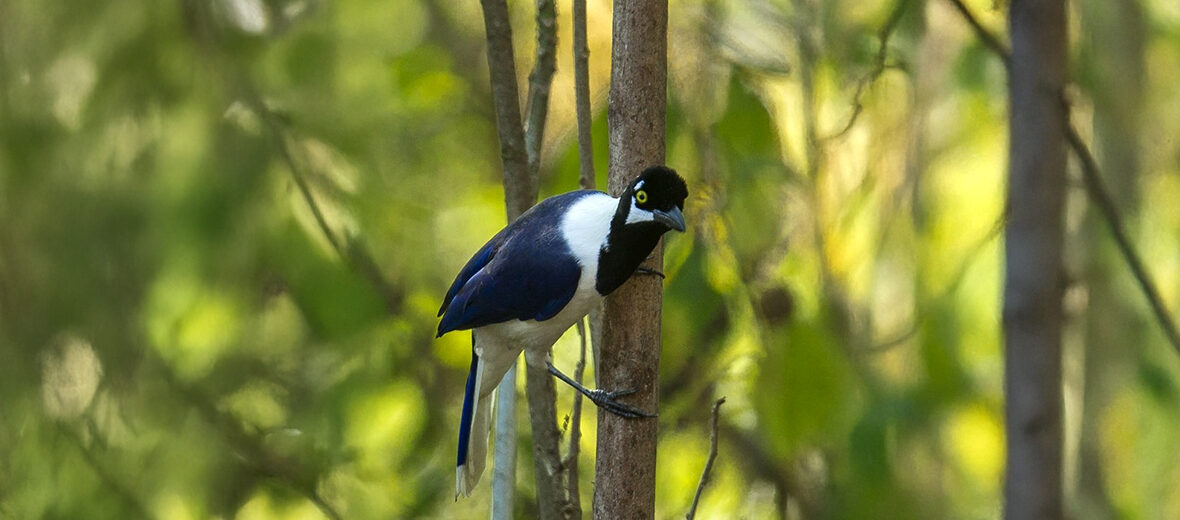
The white-tailed jay, aka moustached jay, hails from Ecuador and Peru. They prefer to dwell among semi-humid, semi-open woodlands, remaining near thick vegetation closer to rivers and streams. Not facing many threats, sans habitat loss and destruction, these birds are listed as Least Concern by the IUCN. Their populations are decreasing though.
First the Stats…
Scientific name: Cyanocorax mystacalis
Weight: Up to 5.6 ounces
Length: Up to 13 inches
Wingspan: Up to 11.4 inches
Lifespan: Up to 15 years
Now on to the Facts!
1.) These jays were first described by the French ornithologist Louis Ernest Gustave de Sparre in 1835.
2.) Their primary diet consists of insects and seeds, however, they have been known to steal eggs from the nests of other birds.
3.) They tend to forage in flocks of up to 10 individuals.
4.) These jays are preyed on primarily by the bicolored hawk.
5.) Due primarily to habitat, these jays spend a large portion of their day hunting on the ground.
But wait, there’s more on the white-tailed jay!
6.) Breeding season lasts from February – March.
7.) Nests are built in tall trees close to villages.
Did you know…?
Certain regions have noticed a decrease in population, like the Loja Province in Ecuador.
8.) Females lay up to 5 eggs that are presumed to hatch in around 20+/- days.
9.) While there are no current conservation plans in place, these birds have been seen in the Tumbesian region Endemic Bird Area.
10.) Even though they have a series of calls, the most commonly heard call is a “cha-cha-cha-cha”.
Now a Short White-Tailed Jay Video!
Be sure to share & comment below! Also, check out the Critter Science YouTube channel. Videos added regularly!

Want to suggest a critter for me to write about? Let me know here.
Some source material acquired from: Wikipedia & IUCN
Photo credit: Francesco Veronesi



